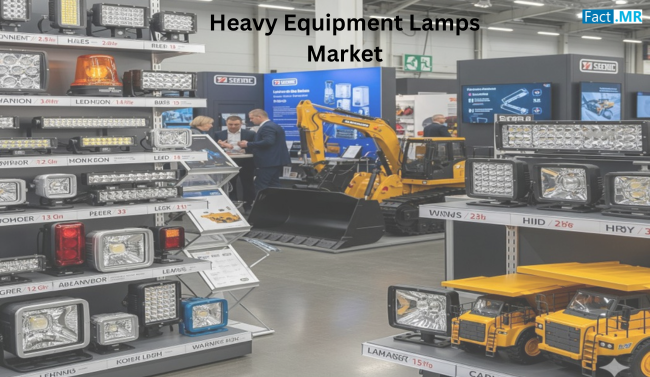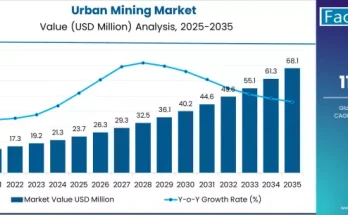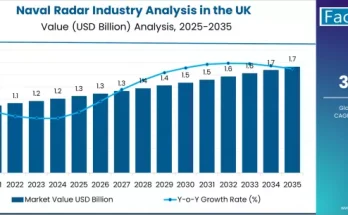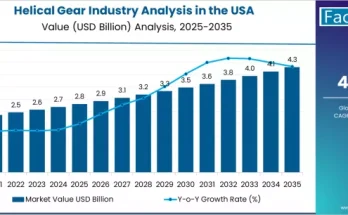Heavy equipment lamps are lighting solutions designed for machines and vehicles used in demanding environments — construction, mining, agriculture, and other heavy-industrial applications. Their purpose goes beyond mere visibility: they contribute to safety, operational efficiency, and durability under harsh conditions. Over recent years, this market has drawn increasing attention as industries invest in infrastructure, safety, and energy-efficient solutions.
This article explores what’s driving the heavy equipment lamps market, how it is evolving, important segments, regional dynamics, key challenges, and what the future is likely to bring.
What Are Heavy Equipment Lamps
Heavy equipment lamps include various lighting types that are fitted to machines such as excavators, loaders, bulldozers, haul trucks, agricultural tractors, mining machines, and similar equipment. Types include head lamps, rear lamps, signal lamps, flashing lamps, and other specialized lighting. These lamps may use different lighting technologies such as LED, halogen, and HID (High Intensity Discharge) lamps.
Key qualities required of these lamps include:
- Durability: able to withstand vibration, impact, dust, moisture, extreme temperatures.
- High visibility: bright enough for safe operation in low-light, dawn, dusk, night, or in underground mining environments.
- Energy efficiency: especially as machines run for many hours, power draw matters.
- Flexibility in mounting and electrical compatibility: various machines have different mounting constraints, voltage supplies, and power systems.
These lamps therefore must be rugged, efficient, and reliable.
Market Drivers
Several factors are pushing growth in the heavy equipment lamps market.
- Growth in Infrastructure & Construction Projects
As urbanization continues worldwide, there is heavy investment in roads, highways, bridges, railways, airports, and related infrastructure. Construction equipment is required for these projects, and proper lighting is critical for safety and round-the-clock operations. - Expansion in Mining and Agricultural Machinery
Mining operations often run into dark conditions (underground or at night), dust, and require durable lighting. Similarly, agriculture often involves early-morning or late-evening work. Increasing mechanization in agriculture and mining amplifies demand. - Safety Regulations and Operational Standards
Regulations around workplace safety, occupational health, and equipment standards are becoming stricter in many countries. Proper lighting is part of ensuring safety—for operators, nearby workers, and for preventing accidents. - Rising Adoption of LED Lighting
LED is replacing older lighting types (like halogen, and in some cases HID) due to better energy efficiency, longer lifespan, lower maintenance, and better performance under harsh conditions. LEDs often consume less power and produce less heat, which helps in heavy equipment usage where reliability is critical. - Demand for Signal and Flashing Lamps
Besides primary illumination, signal, warning, and flashing lamps are needed for communication, safety, and compliance. These are especially significant on construction sites, in mining zones, and for heavy equipment moving on or near well-trafficked areas. - Technological Innovations
Enhancements in materials (for weather, dust, moisture resistance), optics (to focus or diffuse light effectively), and power electronics help improve lamp performance. Also, integration of smart systems — e.g. lamps that adjust brightness or sense ambient light — adds value.
Market Size & Growth Expectations
- The market size in recent years has been estimated at several billion USD, reflecting strong base demand in the heavy equipment sectors.
- Moderate compounding growth rates are expected over forecast periods, driven by continued infrastructure expansion, mining and agriculture modernization, and greater adoption of newer lighting technologies like LEDs.
These growth rates may not be explosive, because heavy equipment lamps are somewhat mature products, but steady improvement in efficiency, safety, and regulation, plus increasing demand globally, ensure growth.
Segment Analysis
Breaking the market into segments helps understand where demand is highest and where future opportunities lie.
By Lamp Type
- Head Lamps: For forward illumination — essential for machine operators to see the work path.
- Rear Lamps: For visibility from behind; useful in transport, reversing, night work, and safety.
- Signal Lamps: For signaling intent, position, or warning.
- Flashing Lamps: Often used as warning or hazard indicators.
- Other Lamps: Includes specialty lamps, floodlights, auxiliary lamps, etc.
Signal and flashing lamps often show strong growth because safety and compliance requirements make signals needed in many environments.
By Lighting Technology
- LEDs: Increasingly popular due to energy efficiency, long lifespan, ruggedness.
- HID Lamps: Still used in many heavy equipment setups especially where very high brightness is needed.
- Halogen Lamps: Less efficient, shorter lifespan in comparison, may still have niches due to cost or existing infrastructure.
- Others: Might include incandescent in older machines, or specialized lamps / custom lighting solutions.
By End-Use / Industry
- Construction Equipment: One of the largest consumers of heavy equipment lamps—excavators, loaders, concrete equipment, etc.
- Mining Equipment: Demands high durability and performance in dark, dusty, harsh environments.
- Agriculture & Farm Machinery: Early-morning or night work, sometimes remote locations; reliability matters.
- Other Heavy Industrial Equipment: Includes forestry machinery, port equipment, material handling, etc.
Regional Dynamics
The market behavior varies by region depending on infrastructure spend, regulatory environment, industrialization, and adoption of new technologies.
- East Asia tends to be one of the biggest markets, thanks to large domestic machinery manufacturing, high infrastructure investment, and rapid growth in construction and mining.
- North America is also significant, with strong safety regulations, demand for efficient and durable lighting, and replacement cycles.
- Asia-Pacific, excluding Japan sees growing demand in countries like China, India, Southeast Asian states because of urbanization, rising standards, and government infrastructure programs.
- Other regions (Europe, Latin America, Middle East & Africa) show mixed behavior — in some places modernization pushes growth; in others cost or supply constraints slow replacement or adoption of higher-end lighting tech.
Competitive Landscape & Players
The market includes both global and regional players. Key characteristics include:
- Manufacturers invest in R&D, focusing on improving lamp durability, energy efficiency, mounting flexibility, vibration resistance, and weatherproofing.
- Some players leverage scale to produce LEDs and other advanced lighting technologies more cost-effectively.
- Partnerships and acquisitions may occur, as companies seek to expand their product portfolios or enter new geographies.
- Regional manufacturers that understand local operating conditions (dust, humidity, voltage variations) may hold advantages in certain markets.
Some of the prominent companies operating in this space are well-known lighting or electronics firms, as well as specialists in heavy-equipment accessories.
Challenges & Restraints
Even as the market grows, it faces several challenges:
- Harsh Operating Conditions
Vibration, dust, moisture, extreme temperatures can damage lamps or reduce lifespan. Designing for reliability under these conditions increases cost. - Power and Electrical Constraints
Heavy equipment might have varying voltage systems; compatibility is important. Power draw must be managed, especially if many lamps are used, to avoid overstraining electrical systems. - Cost Sensitivity
Some buyers are very price-sensitive, especially in developing regions or for older equipment. LEDs and high-end lamps carry higher upfront costs, even if lifecycle cost is lower. - Regulatory and Emissions Standards
Sometimes regulations lag, or differ across regions. In other regions, there may be import duties, or standards for lighting, safety, or environment that affect what lamps can be sold or used. - Competition from Alternative Lighting or Retrofit Solutions
Retrofitting old machines with newer lighting, or using portable lighting towers etc., may reduce demand for built-in heavy equipment lamps in some cases.
Opportunities & Emerging Trends
Several trends point toward opportunities for growth and innovation.
- LED Penetration Increasing: As LEDs become cheaper and more efficient, the shift from halogen or HID to LED is accelerating.
- Smart Lighting Features: Sensors, adaptive lighting (brightness based on ambient light), control systems that turn lights on/off automatically, or integrate with machine telemetry.
- Modular and Retrofit Designs: Models that allow replacing parts or upgrading lighting without replacing full lamp assemblies could appeal to cost-sensitive buyers.
- Portable Lighting Towers & Auxiliary Lighting: For temporary job sites, or areas where machine-mounted lighting isn’t sufficient.
- Focus on Energy Efficiency & Lower Maintenance: Buyers increasingly value not just brightness but total cost of ownership — how long the lamp will last, how often it needs replacing, and how much energy or fuel is used.
- Regulatory Incentives: Safety regulations and government programs for infrastructure, mining, and agriculture sometimes include or favor better lighting systems. This can push adoption of safer, more efficient lamps.
Forecasts & Market Outlook
- Moderate but steady growth is expected over forecast periods, driven by infrastructure, mining, agriculture investment, increasing demand for safety, and transition to efficient lighting technologies.
- The portion of lamps using LEDs is expected to grow faster, while traditional lighting types gradually decline in share (though not immediately replaced in all contexts).
- Signal and flashing lamp segments are projected to grow strongly, owing to safety and regulatory mandates.
- Regions with rapid infrastructure build-out and less saturation (e.g. parts of Asia, Latin America, Africa) are likely to offer more upside. Meanwhile, mature markets will see demand primarily from replacement, regulatory upgrades, and premium features.
Implications for Businesses
For manufacturers, suppliers, distributors, and end users, several strategic implications emerge:
- Prioritize product durability and environmental resistance (dust, moisture, vibration). Lamp failure in heavy environments can cause downtime, safety incidents, and added costs.
- Embrace LED technology and innovation, but also manage cost structure so that offerings are affordable in less developed markets.
- Design for versatility and retrofitability, allowing customers to upgrade existing equipment rather than replace whole units.
- Ensure compliance with safety and lighting regulations and keep abreast of local requirements — for example, signal lamp standards, brightness, colors, mounting positions.
- After-sales support, replacement parts, warranty, and strong distribution networks matter, especially for heavy equipment operating in remote or rough conditions.
- Consider offering smart features or integrating with equipment telemetry and controls; lighting that adjusts automatically, or diagnostics that tell when a lamp is degrading, can add value.
Conclusion
The heavy equipment lamps market is set for steady growth. As construction, mining, and agricultural sectors keep pushing for greater efficiency, safety, and round-the-clock operations, quality lighting becomes more of a necessity than an accessory. The shift toward LEDs, signal and warning lamps, better durability, and smarter features are all key drivers.
For companies in the space, those that can balance performance, cost, durability, and local market needs are likely to win. The future demands lighting that not only works — in the dark, in dust, under vibration — but does so efficiently, reliably, and safely.



